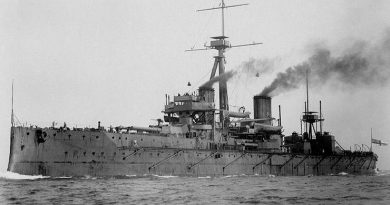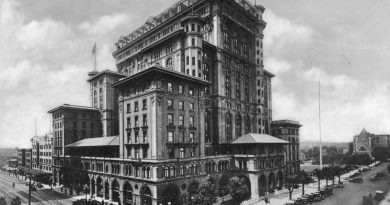Biz-Biz 1900
High Praise
The members of the Vancouver Board of Trade would have been basking in the praise of its activities given in the December 12, 1900 Province.
In a Page 8 story headlined NORTHERN SERVICE the Province wrote: “If a stranger, whether possessed of business training or not, had have been present at the meeting of the Vancouver board of trade last night he could not have failed to grasp one of the strongest factors in the up-building of this region. In range of ground covered, in energy and directness of purpose, and high executive ability, the board stands second to none in the dominion. The extensive nature of the fields of labor entered by the Vancouver board of trade can be better understood by a consideration of the various subjects submitted for consideration last night.
“The formation of associate boards of trade throughout the province; the establishment of a mint; the improvement of the steamship service to the north; suggestions as to needed reforms in bankruptcy legislation; ways and means touching the construction of a road connecting the head of Howe Sound with Pemberton Meadows, and road improvements generally. Such is a brief sketch of the subject matter discussed.”
At the beginning of the 20th century the Klondike Gold Rush was a subject of overriding interest to the Board. Vancouver was a frequent passing-through spot for gold seekers heading north. In fact, there’s a terrific photograph of the time showing a team of oxen on Cordova Street in front of Page Ponsford Brothers, a prominent city haberdasher. On the second floor, above the shop, the offices of the Vancouver Board of Trade!
North to Alaska!
From the Province for January 10, 1900: “While the members of the board of trade were discussing last evening the advisability of spending more money on advertising Vancouver abroad as the best port in the world for the northern trade, Mr. R. P. McLennan, who has recently returned from Dawson, made a few remarks on which a momentous resolution was afterwards based.” [This would be Robert Purves McLennan, one of the founders of the well-known BC firm, McLennan, McFeely & Prior . . . Mc & Mc.]
What was needed, McLennan said, “was to secure a line of fast steamers that would make this their first port of departure and return. It was a notorious fact that while British Columbia sold about 80 per cent of the goods shipped into the gold fields, not 10 per cent of the people coming out touched at Vancouver.” Seattle was beating us, and Vancouver had lost “hundreds of thousands of dollars through this.” (On April 11, the Province reported that the McKenzie Brothers (otherwise unidentified) asked the Board for support of their proposal to put three “fast steamers” on the northern run with Vancouver as the home port. They claim they can give a five-day service to Skagway and asked the Board for financial assistance. Referred to committee.)
McLennan also had harsh words for the White Pass and Yukon railway—which had started operations in Skagway, Alaska four months earlier, and which connected Skagway to Whitehorse in the Yukon—saying it charged too much to carry freight and passengers and, moreover, charged a fee of anywhere from $3 to $10 on every invoice their brokers passed, while U.S. government fees were 50 cents.
Hope-Princeton Road, etc.
This same Board meeting also discussed the notion of having a wagon road built from Hope to Princeton in the Similkameen country, to tap the mining riches there. One of the members, J.C. McLagan, publisher of the World newspaper, objected. He thought the CPR would soon be building a line into that area, so a road wasn’t needed. Still, a meeting later in the month voted to send a delegation to Victoria to push for the building of such a road. The delegation met with the Hon. Mr. Dewdney, who thought the road “desirable and quite feasible,” and believed it would cost $50,000. It was pointed out that virtually every mine served by a railway in British Columbia had first had a wagon road built to reach it, and the railways had followed.
On February 14th the Board recorded its opposition to the eight-hour day for miners, saying that 10 hours made more economic sense. In some jurisdictions, it was noted, miners worked a 14-hour day. Also on the agenda that day, a letter from Maple Ridge municipality asking the Board’s support for a trunk road there. The Dewdney Trunk was already built by 1900, so we’re not sure where this one was intended to go. (Construction on the Lougheed didn’t start until 1928.)
Other subjects touched upon at various Board meetings this year were fire insurance rates (thought too high), preferential tariffs in trade with the UK, trading stamps (thoroughly disapproved of), and the status of the city hospital. The board also, for reasons not given in the August 15th article, recommended the purchase by the city of English Bay beach.
New President, New Map, Old Problem
Fred Buscombe, 38, a glass merchant, was elected President of the Board on March 7, succeeding Charles Tisdall. (Buscombe, a prominent and popular retailer, would become mayor in 1905.) In the same Province story in which his election was announced, this funny item appeared: “Mr. Allan, an advertising agent of Seattle, wished to present a scheme for advertising the city of Vancouver in pamphlet form, and passed sample books around illustrating the manner in which Seattle had been written up. A member pointed out the fact that Canadians were referred to in a very scandalous and unkind way in large print in the book in connection with the British Columbia mining industry. If Mr. Allan had any chance of dealing directly with the board of trade regarding his scheme, it was killed by this discovery, for a resolution was promptly moved and seconded and unanimously passed that the board of trade take no action.”
An April 10 meeting called for a study of the “distasteful” 10 per cent royalty levied by the government on “the gold of the Yukon.” A large amount of gold is smuggled out of the country because of the royalty, the Board said, “thus depriving Canada of business which would be done here if the gold were purchased in Dawson and paid for in Dominion currency.”
The same meeting called for a new map of the province.
The steamer service to Skagway came up again July 17. It turns out that Puget Sound steamship owners were deliberately not stopping at Vancouver en route to or from Skagway, and it was recommended that “strenuous efforts” be made to establish a service based in Vancouver. A committee was struck to approach city council. One speaker commented that boats of satisfactory dimensions could not be got for less than $150,000. Doubt was expressed that the citizens of Vancouver would approve that expenditure.
Image, top: Klondike Gold Rush crowd follow the 5th Regiment leaving the C.P.R. dock [City of Vancouver Archives Can P22]

![[Klondike Gold Rush crowd follow the 5th Regiment leaving the C.P.R. dock [Can P22]](https://vancouverhistory.ca/wp-content/uploads/2021/01/f24f7236-fd36-4e08-8279-ba244857b558-A25329-800x445.jpg)

![Boat in the First Narrows circa 191? [City of Vancouver Archives AM1592-1-S9-F74-: 2011-092.3435]](https://vancouverhistory.ca/wp-content/uploads/2021/01/dc8d02fa-38f0-49f1-8333-53dbf76d5ccd-2011-092.3435-390x205.jpg)
